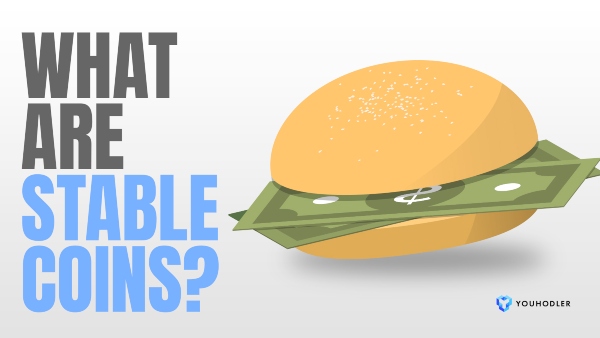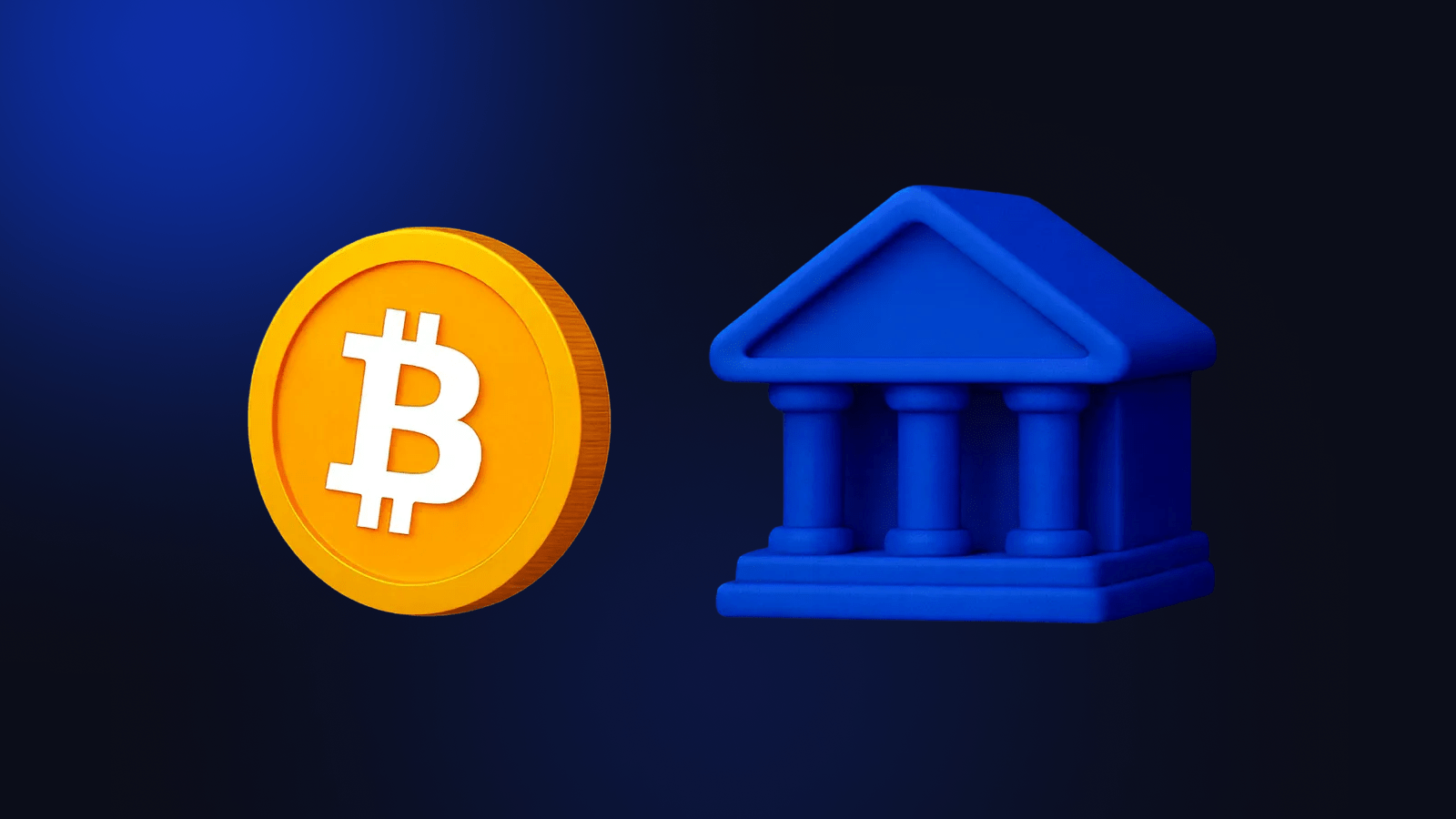What Are Stablecoins? A Complete Guide With Examples

The State of Stablecoins report by ConsenSys reports over 200 stablecoins exist to choose from. But what is making stablecoins such an attractive element for the crypto space and why do we need so many of them? This article will explain what are stablecoins and dive further in more technical topics such as stablecoin backing mechanisms and stablecoin critique.
First of all, crypto is designed as a fast means of exchange outside of traditional finance. However, it has proven to be a controversial store of value due to its volatile nature. The smaller Bitcoin (BTC) market cap compared with the tremendous market cap of the US Dollar makes it much easier for volatility to exist.
A purchase of one billion worth of Bitcoin will have a much bigger impact on the price of Bitcoin compared to the respective purchase of US Dollars. Therefore, a smaller buying capacity can already create volatility for Bitcoin and especially many cryptocurrencies with an even smaller market cap.
In response to this crypto volatility, stablecoins are designed to create a stable safe haven that is barely subject to volatility and offers a better store of value. For stablecoins to maintain a stable value, they simply need to be backed by a stable value.
Stablecoins are a response to the crypto volatility with the benefits of blockchain.
For that reason, stablecoins are often pegged to, or backed by assets such as fiat currencies, gold, or even assets like art or oil. However, many more complex backing mechanisms exist such as algorithmic stablecoins governed by smart contracts also referred to as Seigniorage Supply.
So, what are stablecoins?
What Is a Stablecoin?
The best definition to date about the true meaning of a stablecoin is the following:
“A stablecoin is a currency pegged to another asset and acts as a practical way of using cryptocurrencies while being stable, secure, and convenient for transactions avoiding the highly volatile nature of traditional cryptocurrencies.”
It’s a pretty complete definition of what a stablecoin should be. But why did we invent stablecoins in the first place? We already know they are a good store of value. However, stablecoins bring many more benefits to the crypto industry. Let’s figure out.
Why Do We Need Stablecoins?
Now, to better understand the need for stablecoins, let’s take a step back to analyze the problems traders experienced when they didn’t have access to stablecoins. Before the rise of stablecoins, traders would trade Bitcoin or any other cryptocurrency to make a profit. Whenever they decide to close their trade to lock in profits, they require a stable currency to convert their crypto to.
At that time, the best option available was selling your Bitcoins for a fiat currency like EUR or USD. However, most cryptocurrencies didn’t have a fiat pair unless you were trading Bitcoin or Ethereum. Therefore, you had to sell your cryptocurrency for BTC or ETH and then further sell it for a fiat currency.
Moreover, this put quite a constraint on the cryptocurrency space and the development of more complex financial applications as money was constantly flowing in and out of the crypto space. This meant applications had to rely on exchanges that are centrally managed and limited the creativity of many decentralized applications.
Therefore, stablecoins allowed for money to stay inside the crypto ecosystem. Most people see stablecoins as a stable storage option for storing their value under a virtual fiat currency. In other words, it’s a great way to safely enter or exit highly volatile assets.
Stablecoins allow you to quickly enter or exit highly volatile assets.
However, many users don’t realize that stablecoins allowed for the rise of decentralized finance (DeFi). Many new cutting-edge DeFi applications rely on a stable store of value within the crypto space. This allows them to create more complex financial products without having to rely on centrally governed crypto exchanges.
That’s stablecoins in brief. If you want a deeper explanation, this article covers the following topics about stablecoins:
- Exploring stablecoin backing methods
- Fiat-collateralized
- Crypto-collateralized
- Non-collateralized
- Stablecoin criticism
- Are stablecoins here to stay?
- Conclusion
Let’s get started!
Exploring Stablecoin Backing (Pegging) Methods
In this section, we’ll explore different strategies for backing stablecoins.
1. Fiat-Collateralized - Tether
First of all, let’s take a look at Tether which is an example of a fiat-collateralized stablecoin. The solution is quite simple. The stablecoin needs to be backed by a fiat currency with a 1:1 ratio. This means that every Tether is backed by one dollar.
The disadvantage of such a stablecoin is that it requires regular audits to ensure the stablecoin is indeed backed by the correct amount of fiat.
However, it might sound worse than in reality. Many argue it’s not a bad case to have some form of centralized governance or traditional finance being part of the crypto space. The goal of a stablecoin is to act as a safe haven. Therefore, some argue a centralized body can do a better job at creating this risk-free safe haven. On the other hand, it becomes a heavily regulated currency.
In short, this is the simplest scheme for creating a stablecoin as it’s 100% price-stable and less vulnerable to hacks as no collateral is held on-chain.
2. Crypto-Collateralized - Dai
A crypto-collateralized stablecoin such as Dai is backed by another cryptocurrency. It’s an ideal solution for users who don’t want to use stablecoins backed by banks or state-backed currencies.
However, when collateralizing a cryptocurrency with another crypto, you will still end up with volatility, right? Yes! But wait. Crypto-collateralized stablecoins use a technique called “over-collateralize” to absorb price fluctuations.
For example, let’s store $300 worth Bitcoin in order to issue 100 stablecoin tokens worth each $1. Here, we have a pegging ration of 1:3 which is referred to as over-collateralization. In this setup, the price of Bitcoin can drop up to 66.6% to still be able to provide a $1 value to the stablecoin.
To summarize, crypto-collateralized stablecoins are a great solution to stay within the crypto space. However, they are far riskier as they are still exposed to the price volatility of the underlying cryptocurrency. In addition, a stablecoin such as DAI is much more vulnerable to hacks.
3. Non-Collateralized - Basecoin
As the title explains, a non-collateralized asset is not backed by any underlying asset. Under this category, algorithmic stablecoins can be found. Most commonly, stablecoins use the Seigniorage Supply algorithm.
The algorithm can automatically increase or decrease the stablecoin supply based on the demand, creating a low volatile stablecoin. In other words, volatility can’t be completely eliminated but can be reduced to on average a maximum of 1% which is very acceptable.
To explain the concept, let’s take a look at two examples. First, the price of the stablecoin increased up to $1.05. This means there’s a high demand for the stablecoin so the smart contract regulating the supply needs to issue more tokens to bring the price back to $1.
Next, the stablecoin experiences a low demand and the price falls below $1. However, it’s not possible to destroy already issued coins. Therefore, the smart contract buys back tokens from the market to reduce the circulating supply.
But it’s still possible the smart contract doesn’t hold enough money to buy up the needed number of stablecoins to increase the price to $1. In this case, Seigniorage Shares are issued that entitles shareholders to future stablecoins that are issued by the smart contract when the demand increases again. Therefore, it’s able to stabilize the stablecoin again.
Again, there is some risk associated with non-collateralized stablecoins. In case a downward pressure lasts for a sustained amount of time, shareholders will lose confidence that the shares will eventually payout. Therefore, they will sell their shares creating increased pressure that can trigger a death spiral.
Lastly, Basecoin is an example of a non-collateralized stablecoin that pegs its price to $1 USD. Basecoin utilized a consensus contract to regulate the supply of the stablecoin.
Next, let’s take a look at criticism surrounding stablecoin technology.
Stablecoin Criticism
Stablecoins are a great mechanism for providing a stable store of value within the crypto space. However, crypto-collateralized and uncollateralized stablecoins provide far more risky solutions than a traditional fiat asset or a fiat-collateralized stablecoin.
The foremost issue lays within the code. A simple bug in the code can have disastrous effects for the stablecoin itself. For example, tokens can be lost or stolen. Not to mention the impact on the overall trust in the project.
Furthermore, stablecoins are criticized for their pegging methods. Sustained downward pressure on pegged-currencies will eventually lead to the failure of that currency. As explained with the Seigniorage Supply algorithm, a death spiral can be easily triggered.
Finally, let’s point to the fact that every stablecoin is maintained by a centralized company that controls the peg, whether it be collateralized or algorithmic. A company that controls an algorithmic stablecoin can still decide to alter the code in an unpredicted way.
Conclusion
Are stablecoins here to stay? For the time being, stablecoins are an important element of the Decentralized Finance (DeFi) movement. Stablecoins allow users to escape the volatile nature of the crypto space.
However, many of the currently active stablecoins come with some risks and some of them will likely fail in the future. Therefore, it’s best to stick to popular stablecoins to reduce the risk of seeing your stablecoin fade in a death spiral. If you don’t mind that a stablecoin is governed by a central body, opt for a fiat-collateralized stablecoin as it’s secure to a crash.

Want to earn interest on your crypto? Learn how you can use YouHodler with popular stablecoins such as USDT, PAXG, TUSD, PAX, or USDC to earn up to 12% APR by holding stablecoins.
faq quetstion
.svg)
Suggested Posts



YouHodler is regulated in Switzerland, the EU and Argentina.
YouHodler SA
Registered financial intermediary
YouHodler Italy S.R.L.
VASP registered at OAM / MICAR
YouHodler SA
Registered as VASP with Banco de España
YouHodler SA Branch in Argentina.
Registered as a VASP with the CNV.








